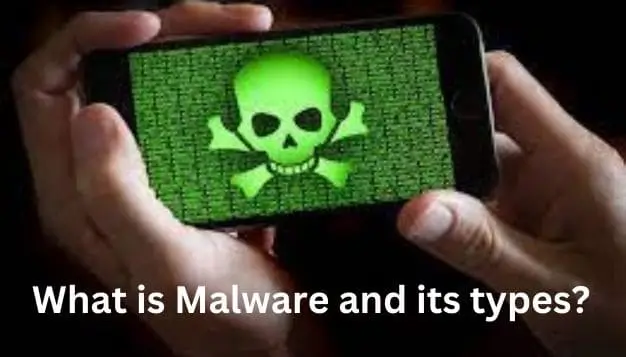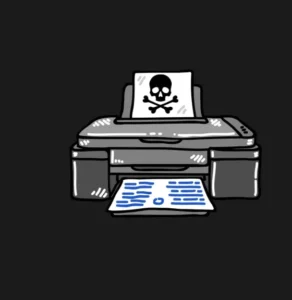
|
Getting your Trinity Audio player ready... |
The term “malicious software” is shortened to “malware.” Malware is invasive software that is purposefully created to harm computers and computer networks. On the other hand, software that unintentionally causes harm is typically called a software bug.
Occasionally, inquiries are made regarding the distinction between malware and viruses. The distinction is that ransomware, which encompasses various online threats such as viruses, spyware, adware, and ransomware, is referred to as malware. To put it simply, one kind of malware is a computer virus.
Phishing, malicious attachments, malicious downloads, social engineering, and flash drives are some of the ways that malware can enter a network. We look at common malware types in this overview.
Types of malware
Knowing the various kinds of malware attacks is essential if you want to keep yourself safe from compromise. Some malware categories are more well-known than others, at least by name:
1. Adware
Adware, which stands for “advertising-supported software,” is software that shows unsolicited and occasionally malicious advertisements on a computer screen or mobile device. It also reroutes search results to websites that sell advertising and collects user data that can be sold to advertisers without the user’s knowledge or consent. Adware is not always malicious; some of it is safe to use and legitimate.
Managing the pop-up controls and preferences in their internet browsers or using an ad blocker can help users control the frequency of adware or the types of downloads they allow.
Examples of Adware:
- Fireball: An Israeli software company found that 250 million computers and one-fifth of corporate networks globally were infected with Fireball in 2017, which made headlines. Your browser becomes controlled by Fireball when it infiltrates your system. It modifies your homepage to look like the phony Trotus search engine and intrudes into every website you visit with intrusive adverts. It also stops you from changing the settings on your browser.
- Appearch: Another popular piece of adware that functions as a browser hijacker is Appearch. It is typically included with other free software packages, and it makes web browsing extremely challenging by flooding the browser with adverts. Appearch.info is displayed when you try to access a website. Should you succeed in accessing a webpage, Appearch transforms arbitrary text passages into hyperlinks, causing a pop-up window to appear and request that you download software updates.
2. Spyware
Malware that hides on your device, tracks your activities and takes sensitive data—including login credentials, financial information, and account information—is known as spyware. By taking advantage of software flaws, spyware can proliferate through legitimate software bundles or Trojan horses.
Examples of spyware:
- CoolWebSearch: This software used Internet Explorer’s security flaws to take control of the browser, alter its settings, and transmit browsing information to its creator.
- Gator: This program, which is typically included with file-sharing applications like Kazaa, tracks the victim’s online activities and utilizes the data to display targeted advertisements to them.
3. Crypto-malware and ransomware
Malware known as ransomware is intended to prevent users from accessing their system or data until a ransom is paid. Ransomware known as “crypto-malware” encrypts user files and demands payment by a certain date, frequently using virtual currencies like Bitcoin. For many years now, organizations in a variety of industries have faced the constant threat of ransomware. There is a greater chance of being the target of a ransomware attack as more businesses adopt digital transformation.
Examples of ransomware:
Cybercriminals utilized CryptoLocker, a type of malware that was common in 2013 and 2014, to access and encrypt files on a system. Social engineering techniques were employed by cybercriminals to deceive staff members into downloading ransomware onto their PCs, thereby compromising the network. After downloading, CryptoLocker would show a ransom notice promising to unlock the data in exchange for payment in cash or Bitcoin by the specified deadline. The owners of the CryptoLocker ransomware are thought to have extracted about $3 million from gullible companies, even though the malware has since been removed.
In 2019, a new type of ransomware called Phobos malware surfaced. The previously identified Dharma (also known as CrySis) family of ransomware serves as the foundation for this strain.
4. Trojans
A Trojan (also known as a Trojan Horse) is a piece of malware that poses as trustworthy in order to trick you into running malicious software on your computer. Users download it because it appears reliable, unintentionally letting malware onto their devices. The Trojans are merely a portal. They require a host to function, unlike worms. Once a Trojan is installed on a device, hackers can use it to access your network, spy on it, delete, alter, or take control of data, or use the device to join a botnet.
Examples of Trojans:
- The goal of the Qbot malware also referred to as “Qakbot” or “Pinkslipbot,” is to steal user information and banking credentials. It has been in operation since 2007. The malware has changed over time, adding new features for anti-analysis, command and control, and delivery.
- TrickBot malware is a Trojan created and run by experienced cybercriminals. It was first discovered in 2016. TrickBot was first created as a banking Trojan to steal financial information, but it has since developed into a modular, multi-stage piece of malware that gives its operators access to a wide range of illicit online activities.
5. Worms
Worms, one of the most prevalent kinds of malware, propagate over computer networks by taking advantage of flaws in operating systems. A worm is an independent programme that spreads by itself and infects other computers without the user’s intervention. Worms are frequently used to execute a payload, or a piece of code designed to harm a system, because of how quickly they can spread. Payloads have the ability to steal data, erase files from a host system, encrypt data for ransomware attacks, and build botnets.
Example of a worm:
The well-known computer worm SQL Slammer didn’t spread via conventional means. Rather, it created a random IP address and broadcast itself to search for IP addresses that were unprotected by antivirus software. In 2003, not long after it occurred, over 75,000 compromised computers inadvertently participated in denial-of-service attacks against multiple prominent websites. Despite the availability of a relevant security patch for many years, SQL Slammer saw a resurgence in 2016 and 2017.
6. Viruses
A piece of code that infiltrates an application and starts to run it when it is run is called a virus. A virus can be used to start ransomware attacks, DDoS attacks, or steal confidential data once it has entered a network. A virus will remain dormant until the infected host file or programme is activated. It is typically distributed through compromised websites, file sharing, or email attachment downloads. The virus can then reproduce and propagate throughout your systems after that.
An example of a virus
When Stuxnet first surfaced in 2010, it was generally accepted that the US and Israeli governments had created it to obstruct Iran’s nuclear programme. It infected centrifuges and caused them to self-destruct at an unprecedented rate. It was distributed via a USB thumb drive and targeted Siemens industrial control systems. Stuxnet is thought to have damaged one-fifth of Iran’s nuclear centrifuges and infected over 20,000 computers, years behind schedule for the country’s program.
7. Keylogger
One kind of spyware that keeps track of user activity is called a keylogger. Keyloggers have legitimate uses, such as being used by organizations to monitor employee activity or by families to monitor their children’s online activity. Keyloggers, however, can be used to steal banking information, passwords, and other private data when installed maliciously. Keyloggers can infiltrate a system via malicious downloads, social engineering, or phishing.
An example of a keylogger
A University of Iowa student was arrested in 2017 after breaking into staff computers and installing keyloggers to obtain login credentials for the purpose of changing grades. After being found guilty, the student received a four-month prison sentence.
8. Botnets and other automated systems
A computer that has been infected with malware so that a hacker can control it remotely is called a bot. The bot, also known as a zombie computer, can then be used to carry out additional attacks or join a group of bots known as a botnet. Millions of devices may be included in botnets as they propagate covertly. Botnets are utilized by hackers for a variety of illicit purposes, such as DDoS attacks, spam and phishing message distribution, and the propagation of other malware.
Examples of botnets:
- Andromeda malware: Eighty distinct malware families have been linked to the Andromeda botnet. It spread through social media, instant messaging, spam emails, exploit kits, and other means, eventually reaching the size of one million new machines per month. In 2017, the FBI, the European Cybercrime Centre of Europol, and other agencies shut down the operation; however, a large number of PCs remained infected.
- Mirai: A significant DDoS attack in 2016 rendered much of the US East Coast internet inaccessible. The Mirai botnet was responsible for the attack, which at first led authorities to believe it was the product of an adversarial nation-state. A particular kind of malware known as Mirai seeks out Internet of Things (IoT) devices automatically and infects them, conscripting them into a botnet. This IoT army can then be used to launch DDoS attacks, in which a target’s servers are inundated with malicious traffic by a firehose of junk traffic. Even now, Mirai still causes problems.
9. PUP infection
PUPs, an acronym for “potentially unwanted programs,” are programs that might contain toolbars, pop-ups, and advertisements unrelated to the downloaded software. PUP developers point out that, contrary to malware, their programs are downloaded with the users’ permission, so technically speaking, PUPs are not always malware. However, it is well known that the majority of PUP downloads occur from unaware that users have consented to the download.
10. Blends
These days, the majority of malware is a concoction of various malicious software, frequently consisting of elements of worms and Trojan horses as well as the occasional virus. When a malware program is executed, it typically looks to the end user like a Trojan but attacks other victims across the network like a worm.
11. Fileless Malware
One kind of malicious software that infects a computer through the use of legitimate programs is called “fileless malware.” It is difficult to find and eliminate because it doesn’t rely on files and leaves no trace. Although fileless malware became a common form of attack in 2017, many of the attack techniques have been used for some time.
Fileless infections enter memory directly and never make contact with the hard drive because the malicious content is not kept in a file or installed on the computer directly. Due to its small footprint and lack of files to scan, fileless malware is becoming a more popular alternative attack method used by cybercriminals, making it harder for conventional antivirus software to identify.
Signs of Malware Infection:
It’s possible that malware infects your device if you’ve observed any of the following:
- A freezing, crashing, or sluggish computer
- The notorious “death screen”
- Automated programs that start and stop or change on their own
- Reduced storage capacity More toolbars, pop-ups, and other undesired apps
- Messages and emails being sent without your permission
Use an antivirus program to shield yourself from malware threats
Using a comprehensive antivirus is the best cybersecurity against malware attacks and potentially unwanted programs. To protect your data and devices from hackers, viruses, and malware.





